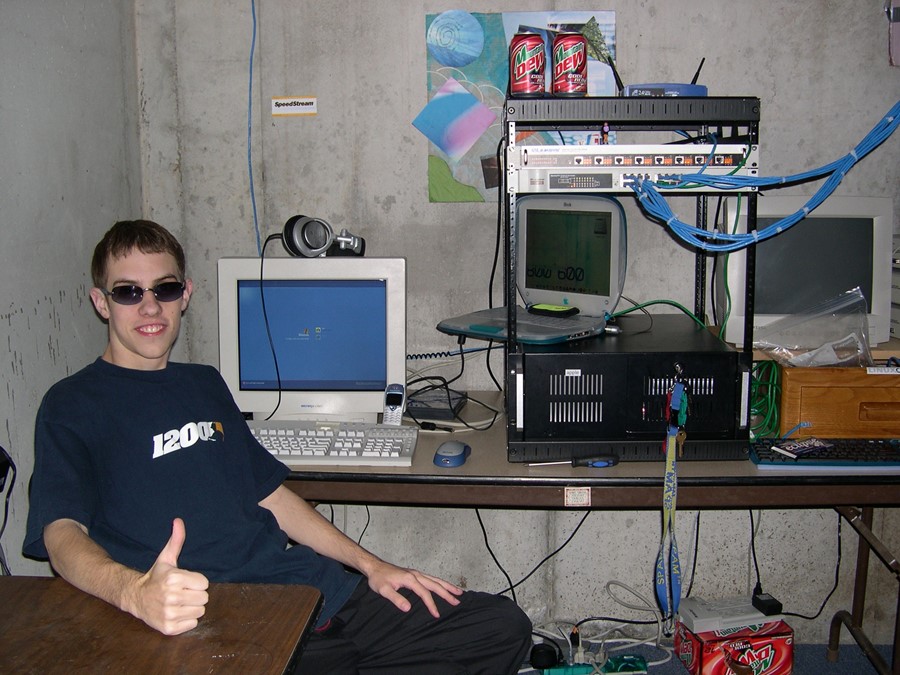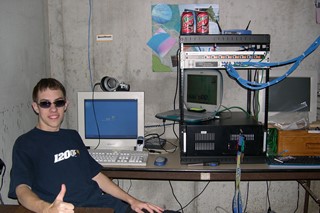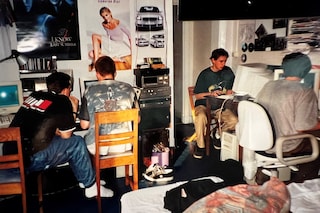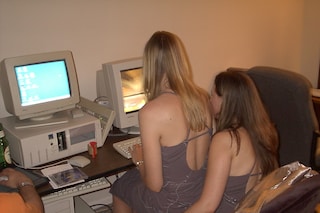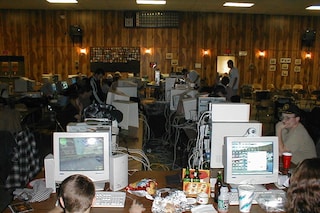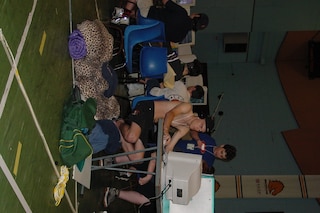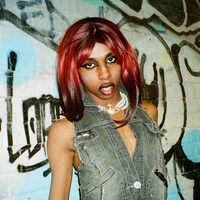merritt k’s new photo book captures the DIY spirit of multiplayer gaming’s glory days and evokes peak Y2K nostalgia
Before high-speed internet connection and Discord servers, multiplayer gaming meant lugging your bulky CRT monitor to a friend’s house, convention centre or random basement for a LAN (Local Area Network) party. In the late 90s and early 2000s, owning a personal computer was still a relatively new thing. For early adopters, LAN parties were an opportunity to meet up with fellow tech enthusiasts, and typically consisted of hours spent in sweaty rooms playing Doom or Quake 2 surrounded by empty bottles of Mountain Dew.
“Anyone who was on the internet in the late 90s and early 2000s was probably something of a misfit who found people who shared their sensibilities and interests online and that was a very powerful feeling,” says merritt k, the video game designer and archivist behind the upcoming book LAN Party. Since first talking to Dazed back in 2022 when she initially began contemplating the project, the artist has collected hundreds of images from an open call – all of which capture the Web1 era in all its hacked-together glory, with burnt CDs strewn across tables, cables snaking across floors, and packed-out sports centres with rows of PCs. Players can be seen wearing nu-metal t-shirts in rooms covered in 90s anime posters. Bulky monitors are framed with stacks of energy drinks, empty junk food packaging and Y2K relics such as Nintendo Gamecubes and digi-cams.
“What’s interesting is that the photos in the book show off not just LAN parties themselves, but the trends, fashions, and objects of interest of their participants at the time,” agrees merritt k. “You see a lot of these cultural threads merging in various ways, for instance in the anime music video (AMV) where footage from anime shows like Dragon Ball Z was set to tracks by groups like Linkin Park. These videos were then shared on forums and file sharing services like Napster and Limewire, because centralised repositories like YouTube didn’t exist yet.”
What’s most interesting is the DIY and community spirit of gaming’s early days, especially when compared to today’s ultra-sleek and official tournaments. There’s something deeply nostalgic about the chaotic, ad-hoc set-ups that feels optimistic, a time when personal technology was seen as liberating. “LAN parties specifically harken to a period before the internet affected everyday life and before the ubiquity of cell phones, meaning that most people still had to play games and hang out together in person,” agrees merritt k. “I grew up during the period when LAN parties were at their peak but my parents would never let me drag our Dell machine out to a friend’s place for one.”
In recent years, there’s been a growing interest in LAN parties, which is unsurprising really when you consider the effect that lockdown has had on gaming culture – QuakeCon, one of America’s biggest LAN parties, is an event that hosts over 3,000 gamers each year. “I think COVID and the ways in which it forced people to retreat from public gatherings also played a big role in making images of people having fun with computers together in basements or living rooms more appealing to people viewing them today,” adds merritt k. This is particularly true for many of us, who’ve grown up alongside the internet, spending most of our time staring at a phone screen. In contrast, LAN parties offer a glimpse into a world before social media took over every aspect of our lives, a time when switching on a computer felt new and exciting.
LAN Party: Inside the Multiplayer Revolution is out January 22 via Thames & Hudson
